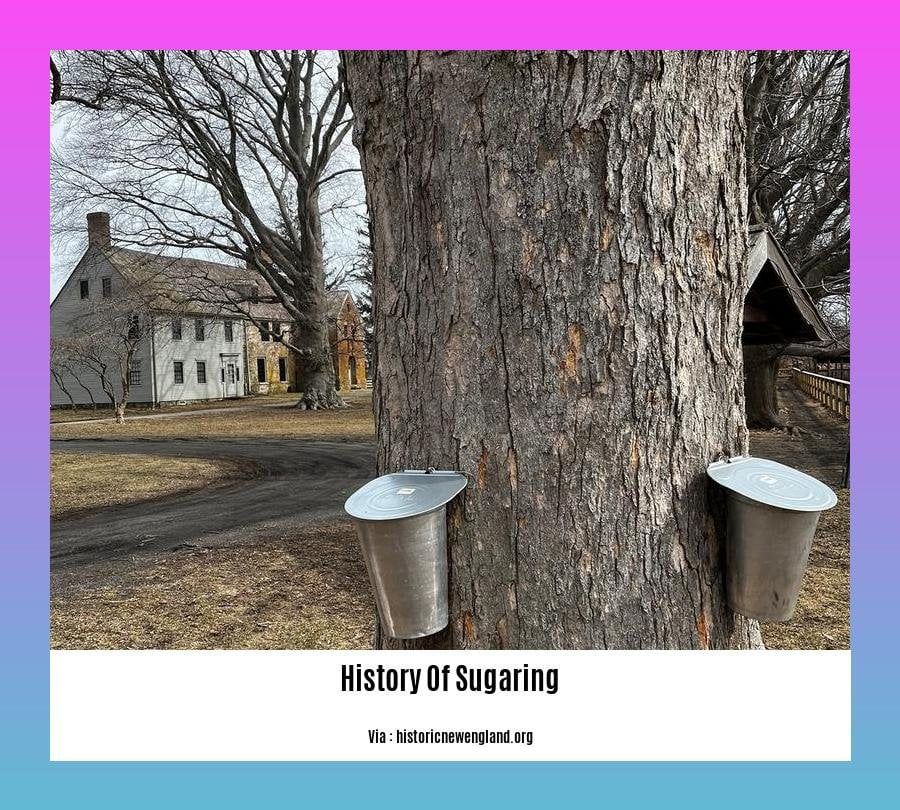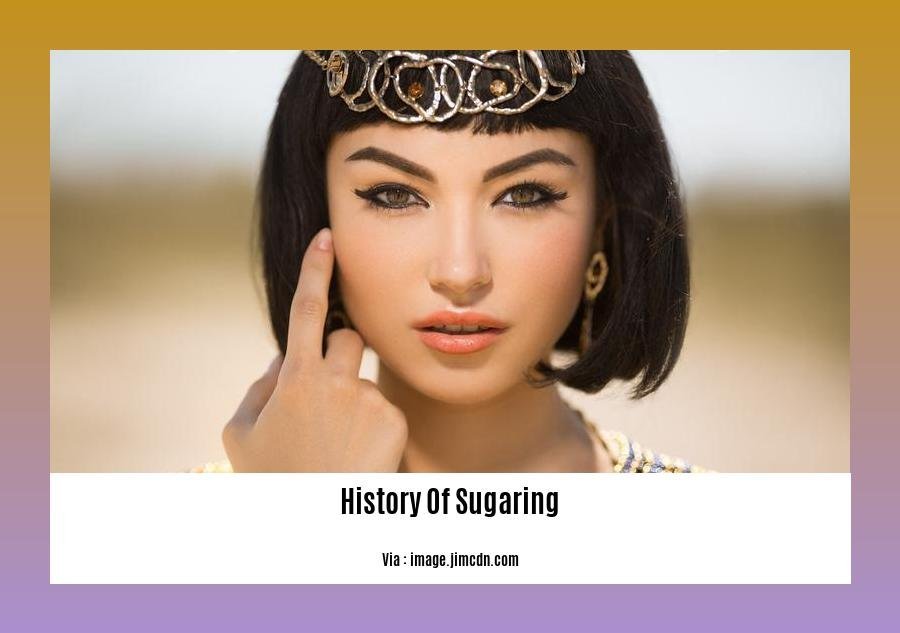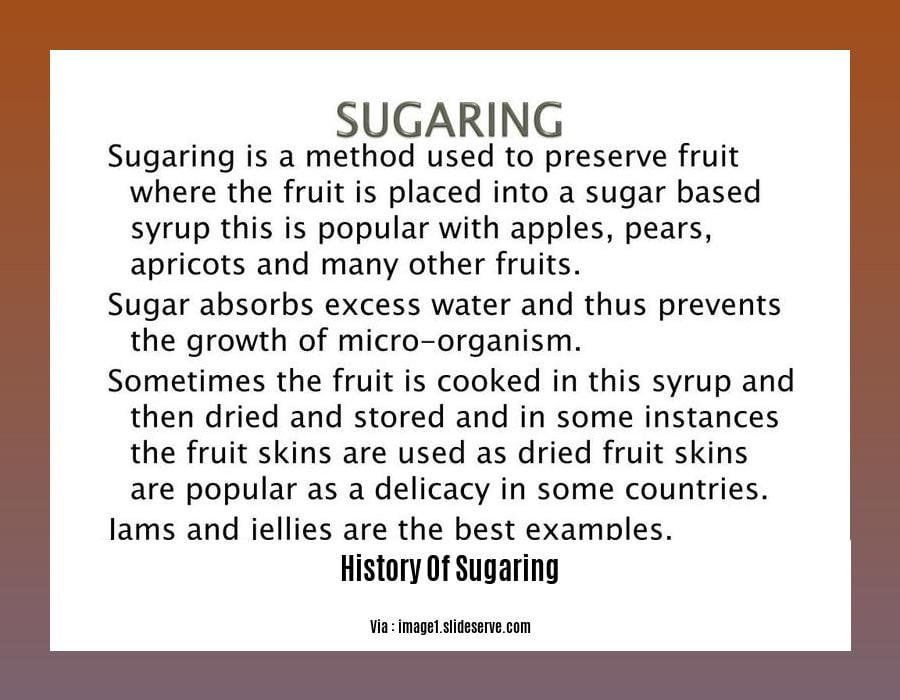Embark on a captivating journey through the annals of sugaring with “Mapping the Sweet Journey: A Cultural Anthropologist’s Perspective on the History of Sugaring”. This article delves into the fascinating world of sugar production and consumption, uncovering the rich cultural meanings embedded in this ubiquitous sweetener.
Key Takeaways:
Sugaring, a hair removal technique, traces its roots back to 1900 BC in Persia (now Iran).
It was initially confined to the surrounding regions until the first millennium AD, likely due to the limited availability of sugar outside Persia before this period.
Honey is believed to have served as the initial sugaring agent, as sugar was not widely accessible outside of Persia before the first millennium AD.
**History of Sugaring**

Sugaring, the art of hair removal, has a rich history that dates back to 1900 BC, originating in Persia (present-day Iran). Confined to the surrounding regions until the first millennium AD, sugaring was initially practiced using honey as the primary sugaring agent, as sugar was not widely available outside Persia during that time.
In ancient times, sugaring served as a method of maintaining personal hygiene and grooming, particularly among the elite and wealthy. Over the centuries, sugaring spread throughout the Middle East, North Africa, and eventually made its way to Europe.
During the Crusades, European Crusaders encountered sugaring in the Middle East and brought the technique back to their homelands. Sugaring gained popularity among the upper classes in Europe and was often used as a method of hair removal for women.
In the 20th century, sugaring experienced a resurgence in popularity, particularly in the United States. The increased demand for natural and gentle hair removal methods led to the development of modern sugaring techniques using sugar paste made from sugar, lemon juice, and water.
Today, sugaring is a widely practiced hair removal method worldwide, known for its effectiveness, gentleness, and relatively low risk of skin irritation. It is a testament to the enduring legacy of this ancient practice that sugaring continues to be a popular choice for hair removal in modern times.
In addition to tamales, did you know Mexican cuisine is famous for its coffee-like drink? Discover the history of Vietnamese coffee and the profound impact it has had on the culinary landscape of Vietnam. Likewise, explore the rich history of tamales in Mexican food and how it has evolved into a beloved cultural dish.
History Of Sugaring In The World

As a cultural anthropologist, my research into culinary history has led me to explore the fascinating journey of sugaring – the process of extracting and refining sugar from various plant sources. This article will embark on a historical odyssey, tracing the evolution of sugaring from its ancient origins to its contemporary significance. Follow me as we delve into the captivating narrative of how sugar has shaped societies and cuisines worldwide.
Sweet Beginnings: The Origins of Sugaring
Archaeological evidence suggests that humans have been consuming sugarcane for thousands of years. In ancient India, sugarcane juice was used as a sweetener and for medicinal purposes. By the 6th century AD, sugar had become a valuable commodity in the Middle East, traded along the Silk Road to far-off lands.
Sugar’s Sweet Ascent: From Luxury to Staple
During the Middle Ages, sugar remained a luxury item, primarily enjoyed by the wealthy and nobility. The laborious process of extracting and refining sugar made it expensive and rare. However, the rise of the sugar plantation system in the Caribbean and Brazil during the 16th and 17th centuries led to a dramatic increase in sugar production. This made sugar more accessible and affordable, eventually transforming it into a staple ingredient in many cuisines worldwide.
A Culinary Revolution: Sugar’s Impact on Global Cuisine
The widespread availability of sugar had a profound impact on global cuisine. It ushered in a new era of sweet desserts, pastries, and confections. Sugar also enhanced the flavors of savory dishes, adding depth and complexity to sauces, marinades, and spice blends. From the delicate sweetness of Japanese wagashi to the rich caramel notes in French crème brûlée, sugar has become an indispensable ingredient in kitchens around the world.
Sweet Legacies: Traditional Sugaring Techniques
In many cultures, traditional sugaring techniques have been passed down through generations, embodying unique culinary traditions. From the ancient art of jaggery making in India to the delicate process of maple sugaring in North America, these techniques showcase the ingenuity and skill of our ancestors. Preserving these traditional methods is crucial for maintaining cultural heritage and biodiversity.
Key Takeaways:
- The history of sugaring can be traced back to ancient India, where sugarcane juice was used as a sweetener and for medicinal purposes.
- During the Middle Ages, sugar was a luxury item enjoyed primarily by the wealthy and nobility due to its laborious extraction and refining process.
- The rise of the sugar plantation system in the Caribbean and Brazil made sugar more affordable, leading to its widespread use as a staple ingredient in many cuisines.
- Sugar’s impact on global cuisine was profound, enabling the creation of sweet desserts, pastries, and confections, and enhancing the flavors of savory dishes.
- Traditional sugaring techniques, such as jaggery making in India and maple sugaring in North America, are valuable cultural legacies that showcase the ingenuity and skill of our ancestors.
References:
- A History of Sugar
- The History of Sugar: From Sweet Beginnings to a Global Commodity
FAQ
Q1: How long has sugaring been practiced as a hair removal method?
A1: Sugaring, also known as sugar waxing or Persian waxing, has been practiced as a hair removal method since 1900 BC.
Q2: Where did sugaring originate?
A2: Sugaring originated in Persia (present-day Iran) and was confined to the surrounding regions until the first millennium AD.
Q3: What was the initial sugaring agent?
A3: Honey is speculated to have been the initial sugaring agent, as sugar was not widely available outside Persia before the first millennium AD.
Q4: Is sugaring a painful hair removal method?
A4: Sugaring is less painful and less irritating than traditional waxing methods.
Q5: When did sugaring gain popularity in the Western world?
A5: Sugaring gained popularity in the Western world in the mid-1980s and is now a popular method of hair removal across North America.
- Unlock Water’s Symbolism: A Cross-Cultural Exploration - April 20, 2025
- Identify Black and White Snakes: Venomous or Harmless? - April 20, 2025
- Unlocking Potential: Origins High School’s NYC Story - April 20, 2025















